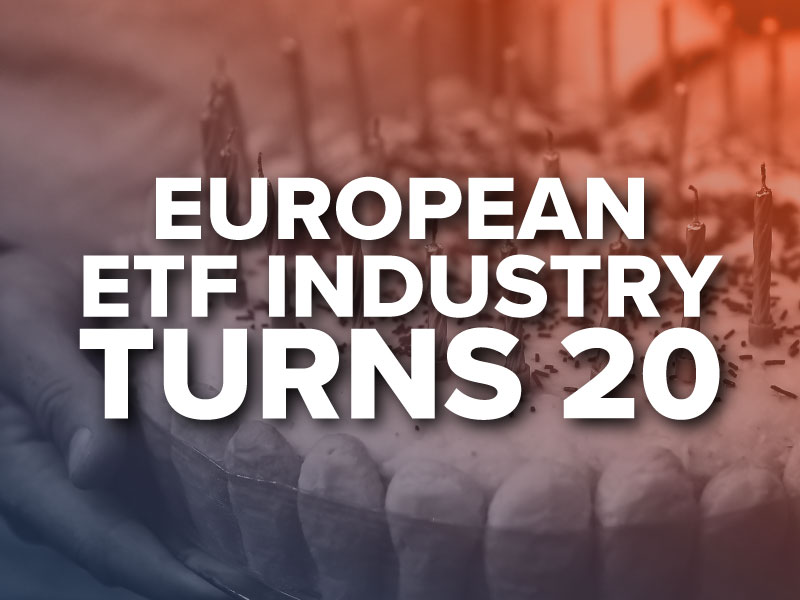The European ETF industry is set to turn 20 years old this year following the launch of the first exchange-traded funds this side of the pond in 2000.
The first ETFs were launched by Merrill Lynch on the Deutsche Börse on 11 April that year, the Dow Jones Euro STOXX 50 and Dow Jones Euro STOXX 50 LDRS ETFs. The iShares FTSE 100 ETF was subsequently listed on the London Stock Exchange on 28 April, then under the Barclays Global Investors brand.
Much has changed since these ETFs first hit the market 20 years ago including BlackRock’s purchase of iShares in 2009, labelled by some as the “deal of the decade”.
Assets in European-listed ETFs, like their US counterparts, exploded after the Global Financial Crisis rising from $143bn to almost $1trn, according to data from ETFGI.
Derek Fulton, CEO of First Trust Global Portfolios, told ETF Stream this rise in ETF assets fits with changing investor habits. "The ETF wrapper is just a bit of technology which complements a lot of other changes in the way consumers are behaving," he added.
As assets have risen and the number of ETFs in the market has grown exponentially so has the pressure on fees. In Europe, the cheapest ETFs available cost investors just 0.04% while the average fees for mutual funds and ETFs is 0.48% compared to 0.93% in 2000.
This has revolutionised the landscape for investors but created a massive headache for ETF issuers.
Gone are the days where issuers could offer a same-same product range and expect to capture significant inflows. There is serious pressure on them to offer differentiated ETFs and have a strong distribution network.
Another consequence of the maturing market is the increase in M&A activity in recent years. As Kenneth Lamont, ETF analyst at Morningstar, said, smaller players have been squeezed out as a result of the pressure on fees.
Players such as Source, Commerzbank, ETF Securities and Think ETF have all been snapped up, while BMO decided to pull the plug on its European ETF push following its inability to capture flows.
“The current market league table reads as a who’s who in global asset management, with little virgin land yet left uncultivated for new entrants,” Lamont added.
Meanwhile, both Lamont and Bryon Lake, head of international ETFs at JP Morgan Asset Management (JPMAM), argued the rate of ETF adoption shows no sign of slowing.
Lake predicted the global ETF industry could hit $30trn by the end of the next decade from its current $6trn base. However, this is small in comparison to Bank of America's $50trn forecast for 2030 amid the continued shift from active to passive and the “increasing awareness” of the benefits of the ETF wrapper.
“ETF adoption is not waning,” Lake continued. “European ETFs turning 20 years old represents an exciting milestone and marks another chapter in the history of ETFs.”
How the next 20 years plays out remains to be seen, however, if the last two decades are anything to go by, the landscape will look completely different to what it is now.


